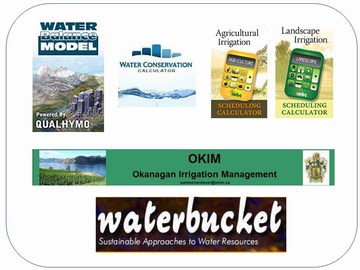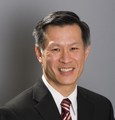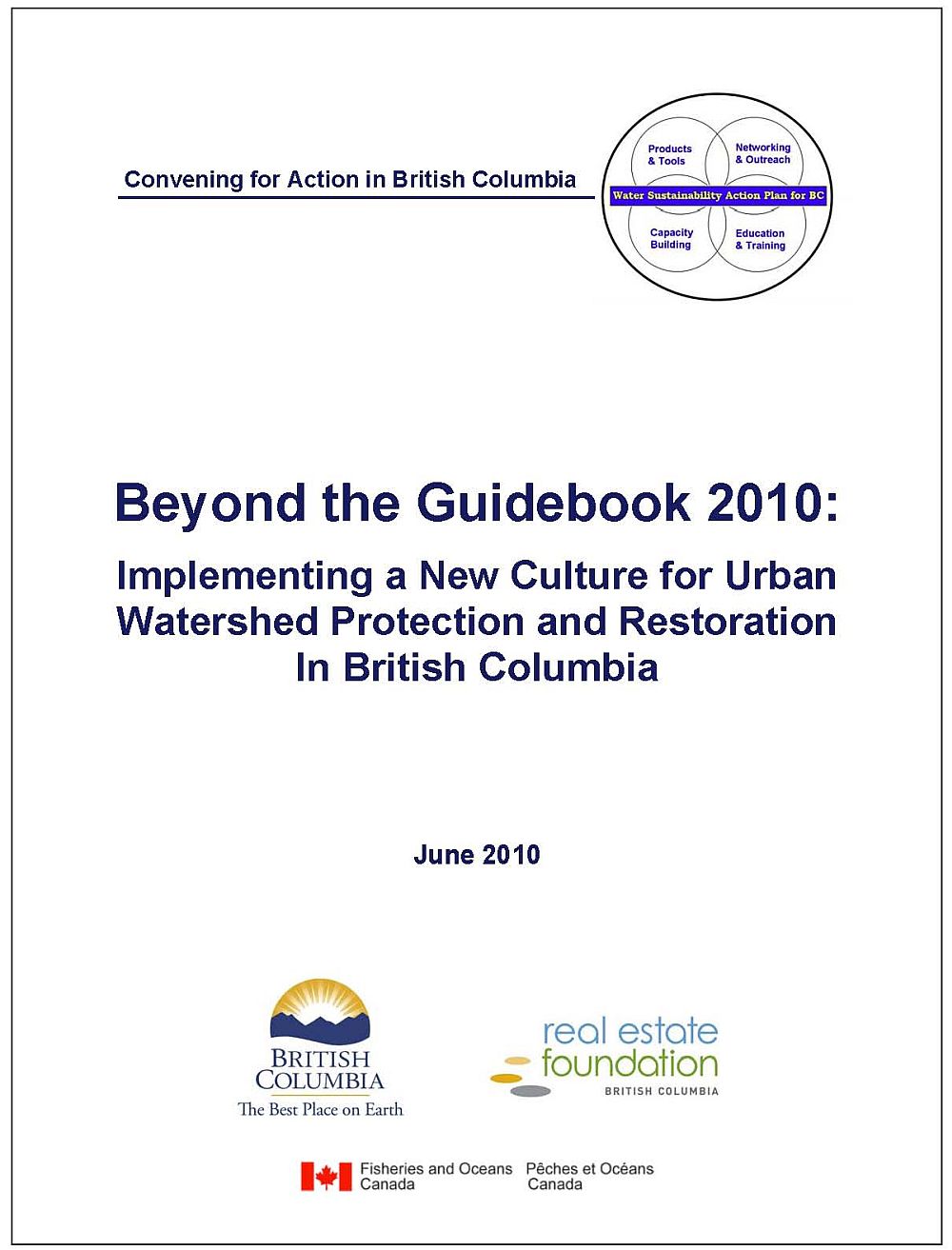Web-based provincial tools enable water-centric planning and Living Water Smart – “Our vision is that the tools will collectively facilitate informed decision-making with respect to climate change adaptation,” stated Ted van der Gulik, Ministry of Agriculture
Note to Readers:
The following story is excerpted from Chapter 6 of ‘Beyond the Guidebook 2010’, released in June 2010. To download a PDF version of the 2-page excerpt, click on Living Water Smart Actions and Targets

Living Water Smart Actions & Targets
Of the 45 actions and targets in Living Water Smart, three in particular serve to establish expectations vis-à-vis how land will be developed (or redeveloped) and water will be used. These three are listed below and are cross-referenced to the three subject areas and page numbers in the Living Water Smart vision document:
- Doing Business Differently: By 2012, all land and water managers will know what makes a stream healthy, and therefore be able to help land and water users factor in new approaches to securing stream health and the full range of stream benefits (page 43)
- Preparing Communities for Change: By 2012, new approaches to water management will address the impacts from a changing water cycle, increased drought and risk, and other impacts on water caused by climate change (page 61)
- Choosing To Be Water Smart: By 2020, 50% of new municipal water needs will be acquired through conservation (page 75)
“To make it possible to achieve Living Water Smart targets and actions, the Province has developed a suite of tools,” reports Ted van der Gulik, the Senior Engineer in the Ministry of Agriculture & Lands. He has been the Province’s lead person for development of all but the Water Conservation Calculator.
Web-Accessible Tools
“These tools are all web-based and accessible to anyone with a computer. They are intended to support new approaches to water management. They can be applied on-the-ground by land and water practitioners.”

“Our vision is that they will collectively facilitate informed decision-making with respect to climate change adaptation.”
“Four of these tools — the Water Balance Model, the Water Conservation Calculator and the two Irrigation Scheduling Calculators — are built on a Universal Calculator technology platform.”
An Holistic Approach
“We now have the tools that we need to influence practitioner and community behaviour. Also, the programs these tools support are linked. So, in 2010 our mission is to link everything together,” continues Ted van der Gulik.
“We are emphasizing the fundamentals of green infrastructure. Topsoil depth is the point of connection between RAINwater Management and Drought Management. Topsoil depth creates a sponge. The sponge achieves two outcomes: reduce water need during dry-weather periods; and limit runoff during wet-weather periods.”
“To help municipal staff and designers advance rainwater management and water conservation goals, the Water Balance Model partnership has collaborated with the Green Infrastructure Partnership to develop the Topsoil Primer Set. It comprises a Law & Policy Primer and a Technical Primer. The approach is holistic.”
Connecting the Dots
“A properly designed water conservation program has the ability to extend the life of infrastructure, reduce repair, treatment and power costs, reduce power expenses, and  defer or eliminate the need for major capital costs,” states Liam Edwards, the Director of Infrastructure and Engineering with the Ministry of Community and Rural Development.
defer or eliminate the need for major capital costs,” states Liam Edwards, the Director of Infrastructure and Engineering with the Ministry of Community and Rural Development.
“Use of the Water Conservation Calculator may become a Ministry requirement as part of the infrastructure grant application process.”
About Beyond the Guidebook 2010
Released in June 2010 at the ‘Dialogue in Nanaimo’, Beyond the Guidebook 2010 describes how water sustainability can and will be achieved through implementation of green infrastructure policies and practices.
“ We have developed and implemented a ‘made in BC’ process that we call Convening for Action in BC,” states Ray Fung, Chair of the Green Infrastructure Partnership. “When we gather, it is for a purpose. There must be an action item or an outcome. Our aim is to move from talk to action by developing tools, providing training, and building capacity.”
We have developed and implemented a ‘made in BC’ process that we call Convening for Action in BC,” states Ray Fung, Chair of the Green Infrastructure Partnership. “When we gather, it is for a purpose. There must be an action item or an outcome. Our aim is to move from talk to action by developing tools, providing training, and building capacity.”
To Learn More:
Download a copy of Beyond the Guidebook 2010: Implementing a New Culture for Urban Watershed Protection and Restoration in British Columbia


